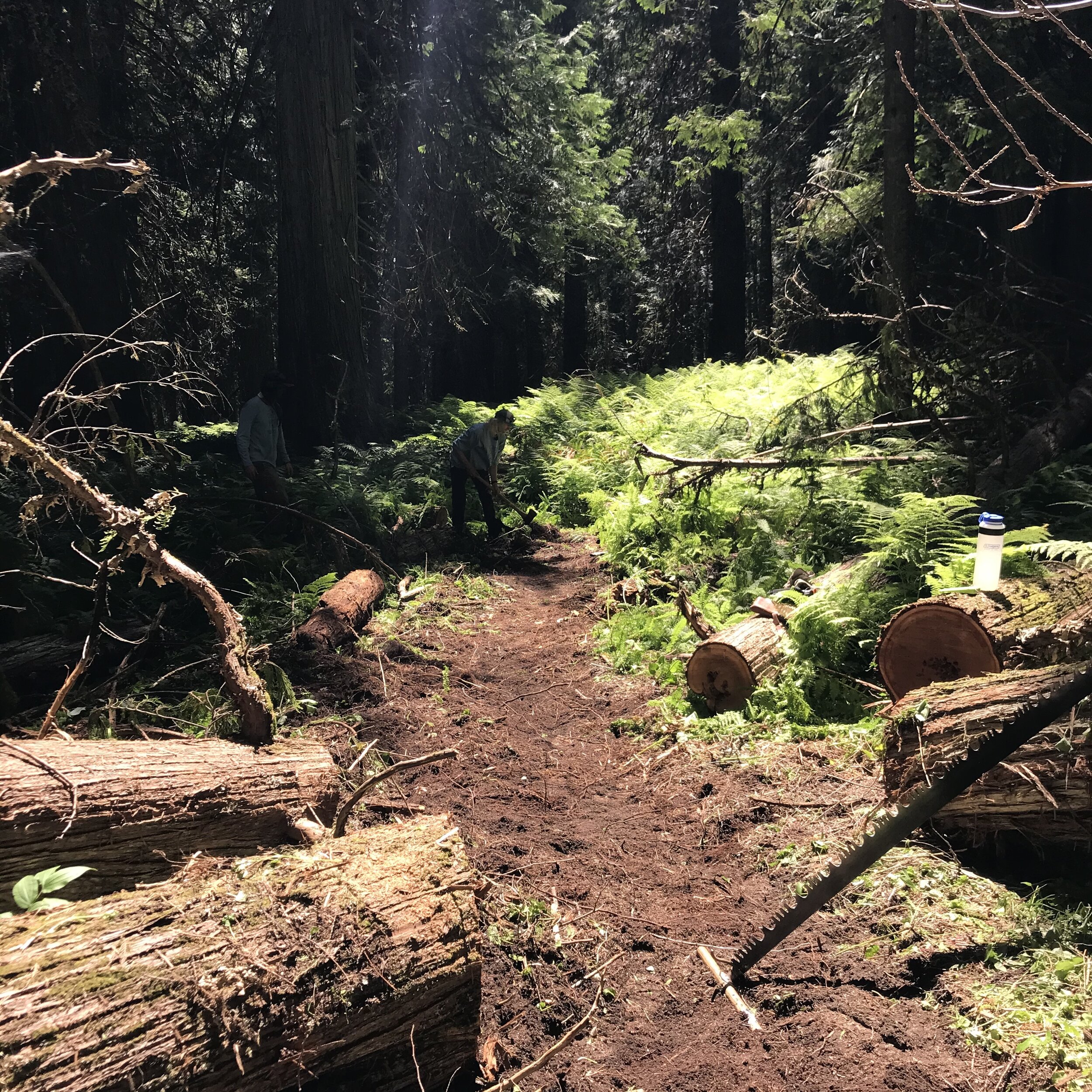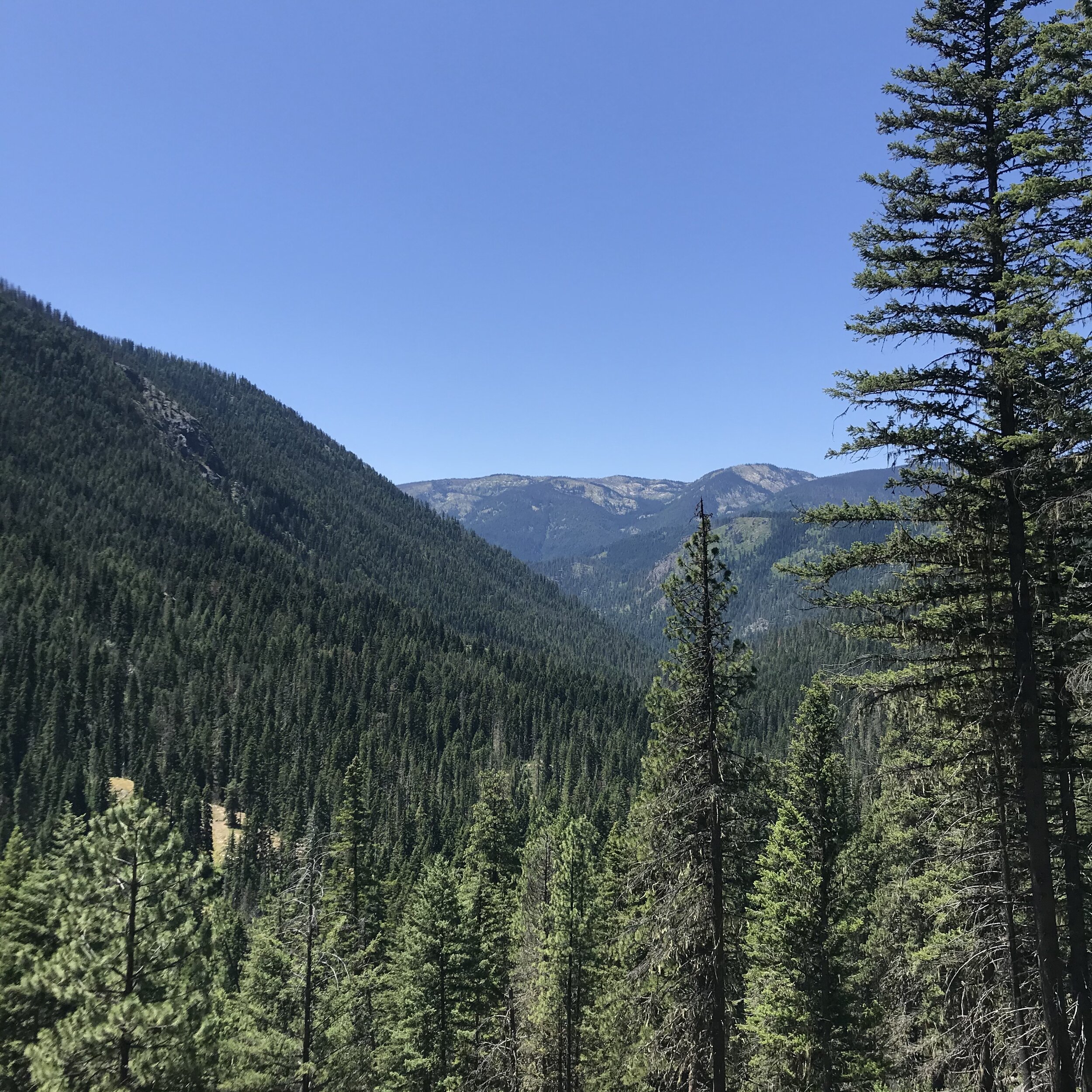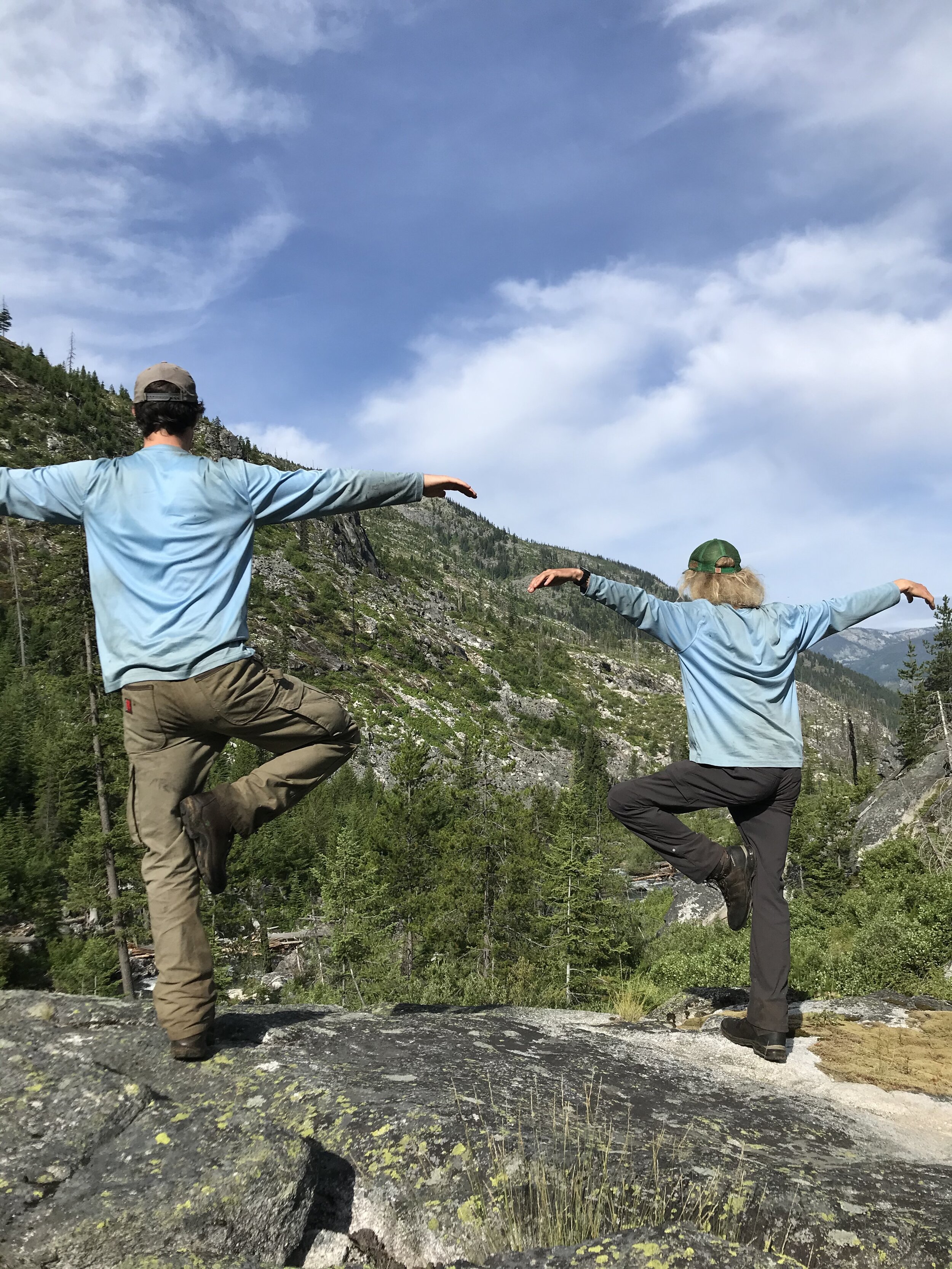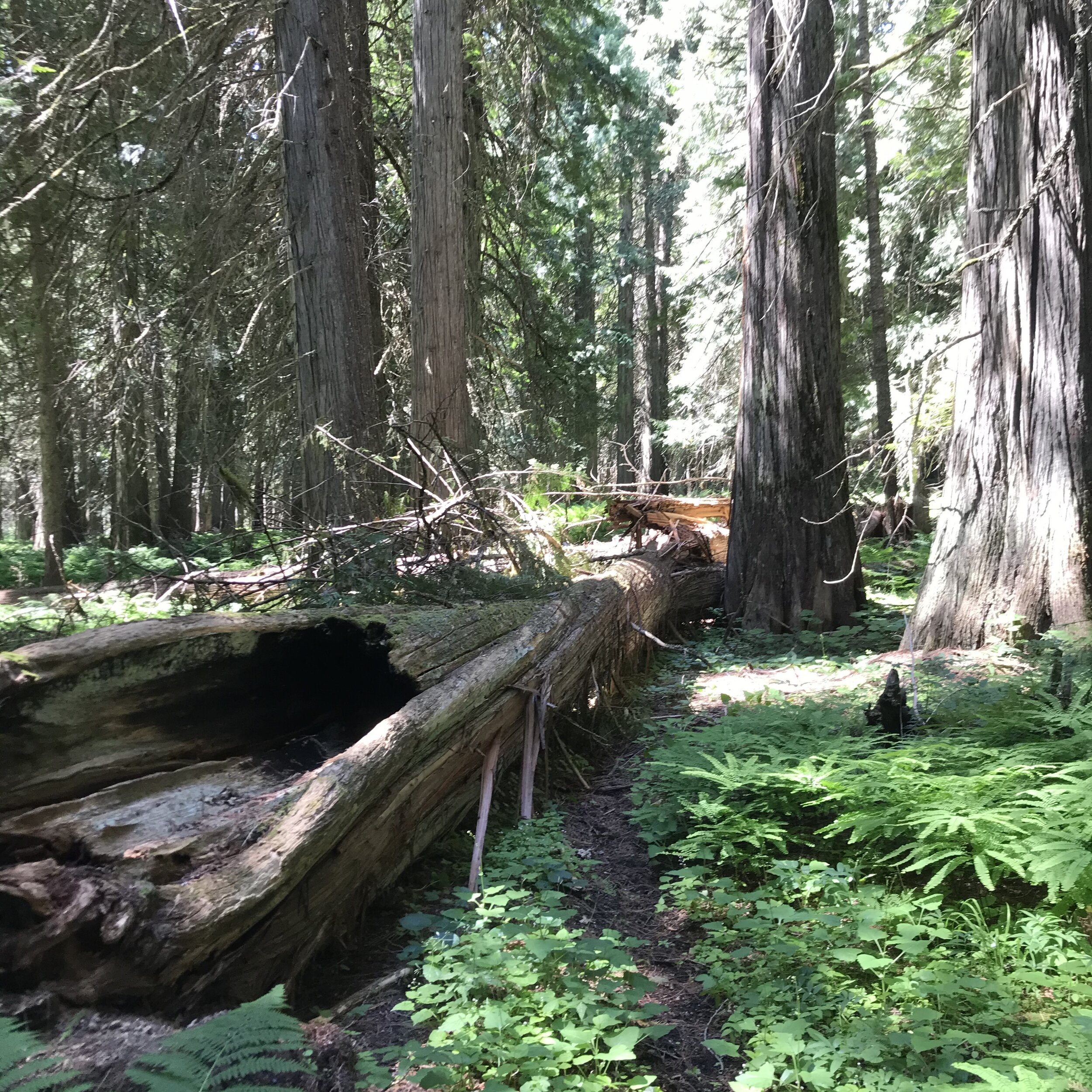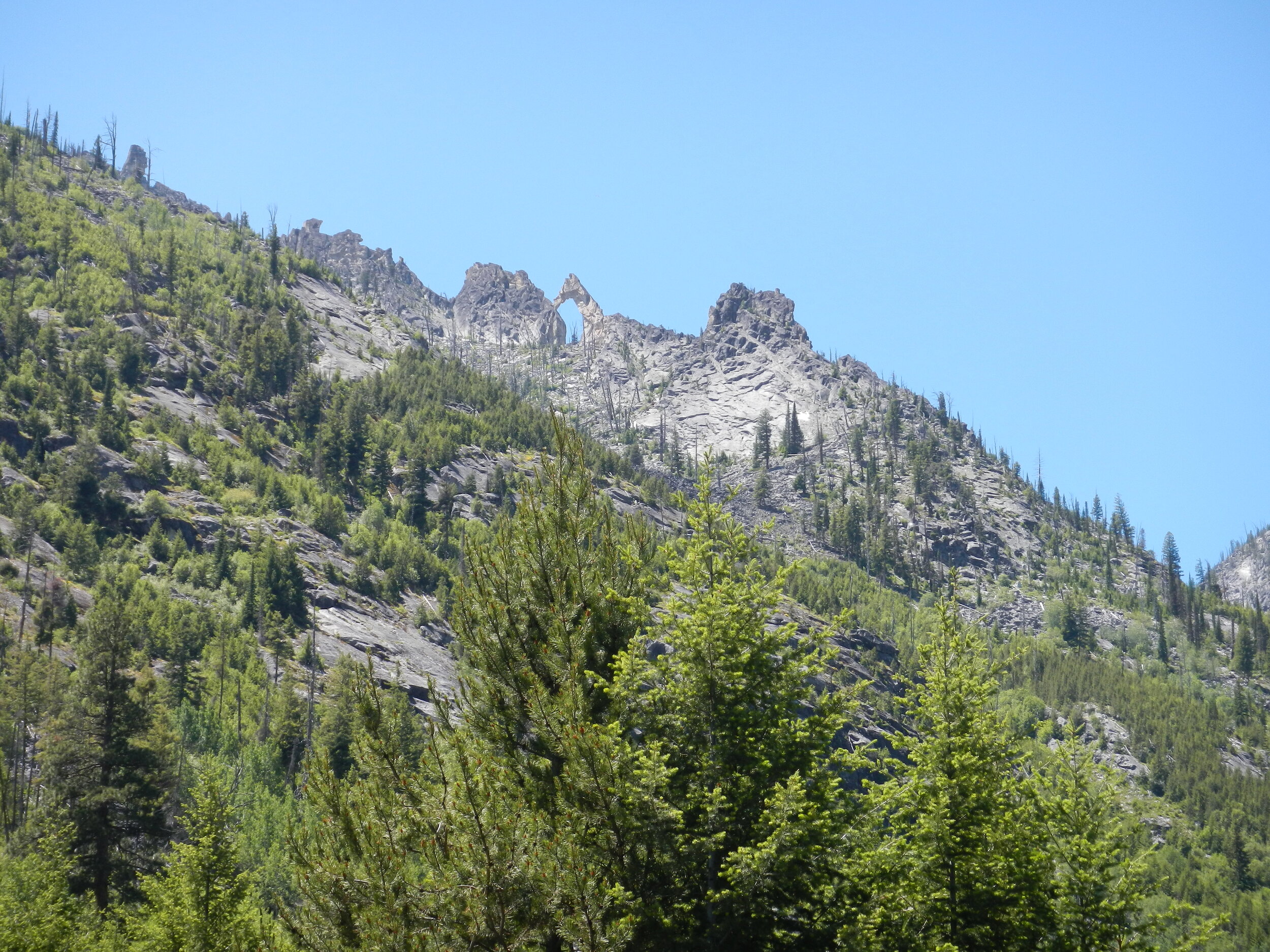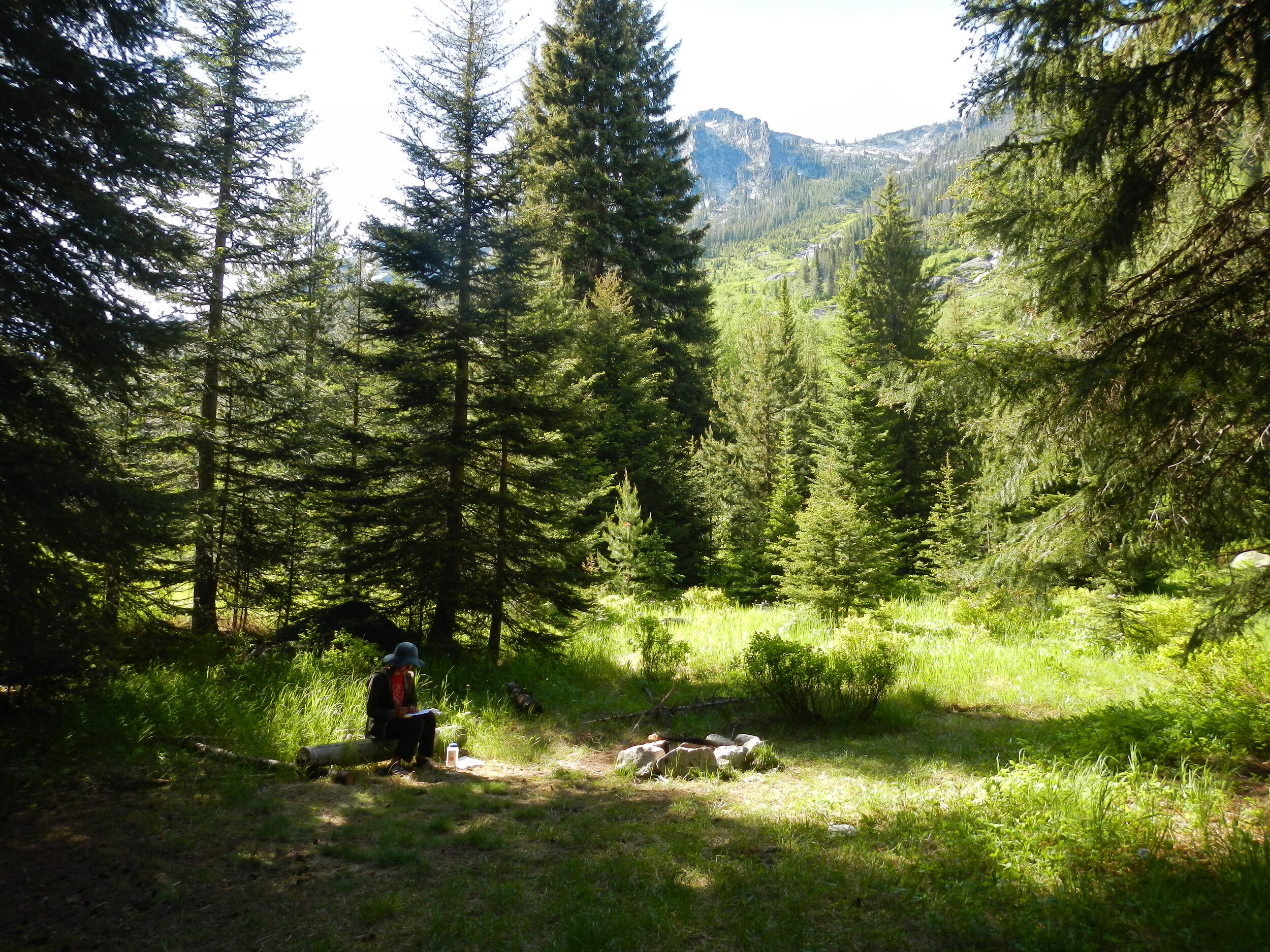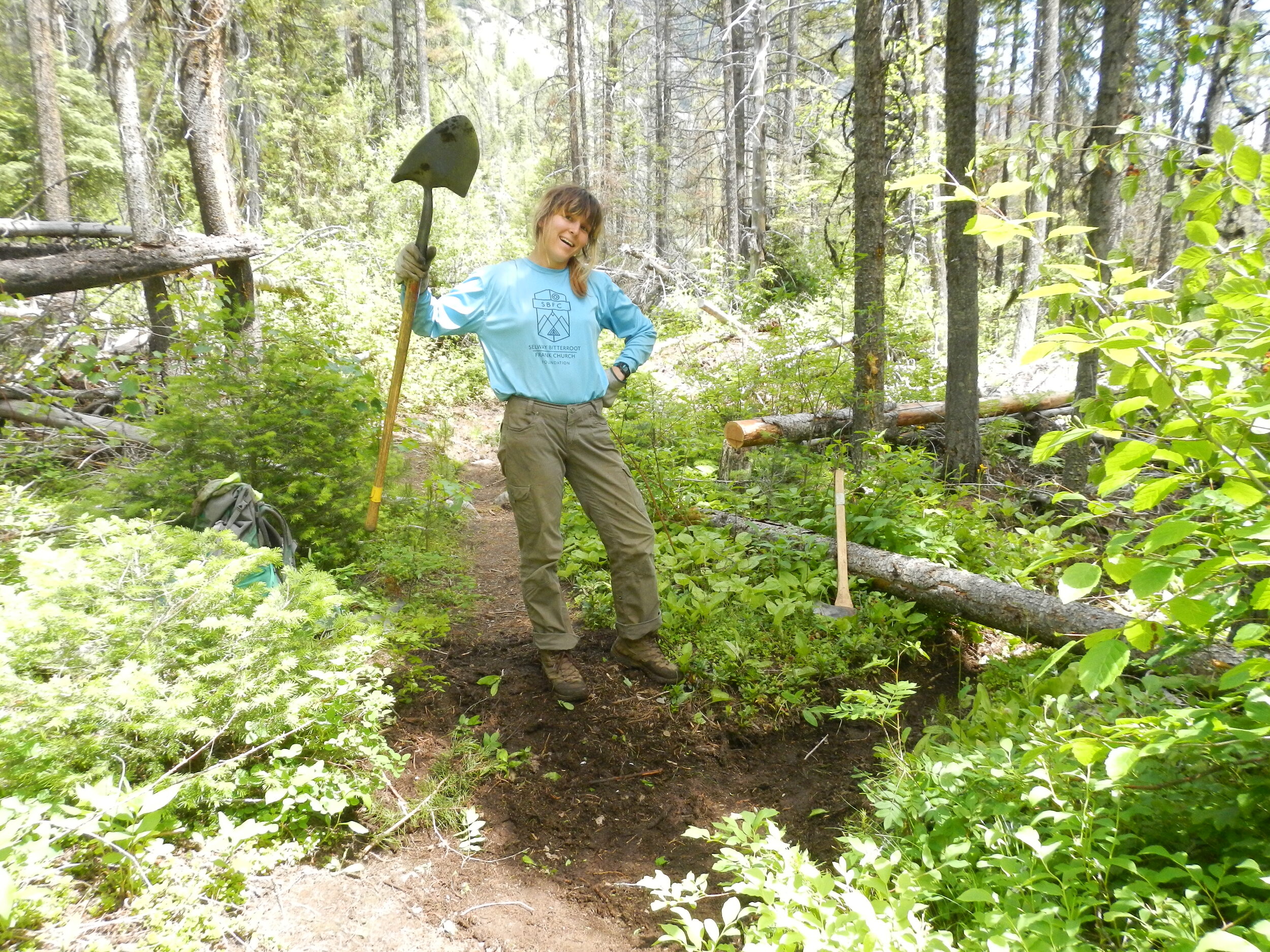Madi, Phoebe, Tori
Hitch #2 Dolph Creek, East Moose Clearing
Pete Chappell
Nez Perce-Clearwater Trail Crew Leader
July 7-15
Nez Perce-Clearwater National Forest
We started off Hitch #2 with a good ol' fashioned 13 hour workday, clearing trees and lugging our feather-light 70-pound packs to a beautiful Cedar Grove where we wearily set our camp up next to a raging East Moose Creek. Eager as we were at that moment to fall into a deep slumber, our immediate concern was to assemble a proper bear hang. However, the forest had other plans, and we spent a far too great and embarrassing sum of time throwing ropes tied to rocks at trees all in the name of keeping our food safe from the hungry bears. At last, we succeeded in our endeavor, finally crawling into our tents and drifting off to the sound of the creek tirelessly flowing by.
In the morning we were graciously awakened by the incredibly pleasant whine of mosquitoes in their ever-present quest to fly directly into our ears and eyes and drink our blood. And as our workday started, we were very quickly reminded that we were indeed back in the wilderness, by the soothing bite of the majestic horsefly on our backs and heads, as if to say, "You smell good and are not in any way covered in sweat and dirt and grime".
Our work propelled us through a dense cedar forest, with trees towering above us and trunks so wide they rivaled the great redwoods. We encountered two massive cedar trees that had fallen directly within the length of our trail. With tree trunks larger than the entire length of our five and a half foot crosscut saw. We saw no way of cutting through it and saving the existing trail. A trail re-route appeared to be in our future, so we dutifully went to work, building a brand new section of trail around the fallen giants.
The next few days we pushed tirelessly forward, the sounds of our axes ringing across the canyon walls and our crosscut continually singing through fallen trees. We were set upon by increasing numbers of downed trees as we worked through hail, rain, blisters, and blazing heat.
In some sections we lost the trail entirely, spending far too many minutes frustratingly poking around in the brush to find it. It was in these sections that we spotted a hungry mountain goat far off in the distance, balancing precariously on small footholds in the cliffside, a towering waterfall dropping off a cliff, spilling its contents into the East fork of Moose Creek, and the biggest bear scat I personally have ever seen. I'm glad the bears are getting their fill of other food apart from ours.
But alas, all good times come to an end and we had to leave our little East Moose Trail project for greener pastures. And by this, I of course mean a grueling 14-mile hike back to the end of our road, Elk Summit, where we had stashed our cars (and a bag of barbecue chips). Our trip had come to an end, but rest assured, the itch of hundreds of mosquito bites we had acquired in our 8 days here were just starting to begin.
But despite the aches and pains. Despite the rain, hail, and heat, the mosquitoes and horseflies, and blisters. The truth is, all of those things pale to the fact that I am lucky enough to have the opportunity to be out here, experiencing these things, taking in the scenery, swimming in the cold glacial water, and maintaining trails so that others may use them and experience these same things. If it means having the privilege to be out here, I would gladly experience all those aches and pains again.
Hitch #1 Beaver Creek
Carly Stinson
Wilderness Steward
June 23-July 1
Salmon-Challis NF
We worked up from the Beaver Creek trailhead through a large burn from 2012. We primarily focused on logout although we also cleared many drains along the way. Over the first three unseasonably warm days of our hitch we cleared trail #21 to the junction with trail #22. There were still large patches of snow on the North side of the saddle. We then cleared trail #22 along the ridge and down to the junction with trail #14. The trail is very out sloped here with long sections of side hilling.
Along trail #14 we encountered two jackstraws left by avalanches. We were able to clear these and down the trail to within a mile of the junction with the Fall Creek trail #20. Despite a couple days of late June snow we cleared many logs including 799 small trees.
Ruffneck View -At
9407’ the Lookout on Ruffneck Peak provides views of Ruffneck Lake and Island Lake, with the Sawtooths and Whitecouds in the distance.
Avalanche_Debris: Large avalanches deposited piles of trees in the trail slowing our progress towards Fall Creek.
Avalanche_Cleared: Wilderness Steward Justine Bright stands in the freshly cleared trail.
Ascent to Joy!
Madison Murrill - Wilderness Ranger Fellow
Hitch #1 - Selway-Bitterroot Wilderness
June 23-30
Bitterroot National Forest
The lowest howl was answered by a chorus of yips and calls. On the first day of our first hitch in the Selway-Bitterroot Wilderness, a pack of wolves added enchantment to the already dramatic landscape.
Sharp granite cliffs rose on the northern side of the trail, while to the south rock formations that defied all reason peppered the seven-mile hike to our camp spot. These features seemed unreal as we followed the creek, sometimes a cascade and at other times just a solid mass of water, the rushing of which often drowned out all other sound.
It was when we moved away from the creek that Phoebe (SBFC Wilderness Fellow), Wilderness Ranger Jack Ader of the Bitterroot NF, and myself heard the wolves. We had been lumbering along, each quietly regretting that extra item we brought that surely made our packs so heavy. Amazement and silence found us as the one wolf called out, and then suddenly many voices were resounding off the canyon walls.
When we arrived, Phoebe and I were eager to begin the task we'd set out for. Jack Ader walked us through the process of inventorying and naturalizing several backcountry sites. It was an interesting and new concept for the two of us, and we were trying not to think about the mess of trees we'd passed on the way to camp. The process of documenting sites turned out to be the primary task for our first hitch.
The remainder of our time was spent tackling a pile-up of large trees in an area we fondly named "The Swamp". We also dug water bars and addressed some water damage along the trail while enjoying a few more performances by the local wolf pack. Although we were sad to leave the mosquitoes and mystique, the next portion of our hitch proved just as rewarding. As Wilderness Ranger Fellows, we became more efficient at campsite monitoring and clearing trail. We sat in awe on the shore of a nearby lake and marveled as an ominous sky slated to unleash snow gave way to a clear sunrise and beautiful day.
Our first hitch was challenging, rewarding, and left us excited for the hitches to come. The Bitterroot has shown us just a sliver of its grandeur, and in the next several weeks we hope to experience much more.

